Silverline 539465 Handleiding
Silverline
Niet gecategoriseerd
539465
Bekijk gratis de handleiding van Silverline 539465 (3 pagina’s), behorend tot de categorie Niet gecategoriseerd. Deze gids werd als nuttig beoordeeld door 47 mensen en kreeg gemiddeld 4.9 sterren uit 24 reviews. Heb je een vraag over Silverline 539465 of wil je andere gebruikers van dit product iets vragen? Stel een vraag
Pagina 1/3

539465
GB
FR
DE
Register online: silverlinetools.com
3
GUARANTEE
YEAR
ANS DE GARANTIE
JAHRE GARANTIE
AÑOS DE GARANTÍA
ANNI DI GARANZIA
JAAR GARANTIE
LATA GWARANCJI
silverlinetools.com
FR Testeur LAN
DE Netzwerktester
ES Comprobador de cable LAN
IT Tester LAN
NL LAN Tester
PL Tester kabli
LAN Tester RJ11, RJ12 & RJ45
Version date: 04.01.2019
234
5
8
1
9
6
7
1. Master Unit
2. RJ11/RJ12: 6P6C - 6P4C Input - Master Unit
3. RJ45: 8P8C – 8P4C Input - Master Unit
4. RJ45: 8P8C – 8P4C - Remote Unit
5. Remote Unit
6. RJ11/RJ12: 6P6C - 6P4C Input - Remote Unit
7. ON/OFF Switch
8. Power Indicator Light
9. LED Connection Indicators
Operation
Testing a cable
IMPORTANT: Please note the ‘G’ connection will only indicate if testing cables with a grounded
connection (connector plugs with a conductive surface and cable with braided or foil-wrapped sleeve
to the inner cables).
1. Insert one end of the cable in the appropriate socket on the Master Unit (1), the other end into the
appropriate socket on Remote Unit (5)
2. Slide the Switch (7) to ON (or Slow)ON/OFF
3. LED Connection Indicators (9) should illuminate in accordance with guidance below
4. If no lights illuminate, check that the cables are connected properly and check the battery
No fault
• RJ45 cables: The LED Connection Indicators (9) on the Master Unit (1) and Remote Unit (5)
will illuminate sequentially from 1 to G
• RJ11 & RJ12 cables: 1 to G on the Master Unit; 1-2-3-4-5-6 (RJ12), 2-3-4-5 (RJ11) on the Remote Unit
Open circuit
(Wire not connected to terminal)
• If one wire, for example No. 3, has an open circuit, the No. 3 light on the Master Unit (1) and Remote Unit
(5) will not illuminate
• If several wires have an open circuit, the respective lights will not illuminate
• If less than two wires are connected, no lights will illuminate
Short circuit
(Wire connected to wrong terminal)
• If one pair is connected incorrectly, for example No. 2 and No. 4, then the following lights
will illuminate:
Master Unit (1): 1-2-3-4-5-6-7-8-G
Remote Unit (5): 1-4-3-2-5-6-7-8-G
• If two or more wires are short circuited, the LEDs on the Master Unit (1) will illuminate
normally and sequentially
As part of our ongoing product development, specications of Silverline products may alter without notice.
Intended Use
This LAN Tester has 8P8C and 6P6C sockets for testing RJ11, RJ12 and RJ45 cables and network socket
connections. The tester can indicate incorrect connections, short circuits and open circuits.
Before Use
Connecting the battery
This product requires a 9V battery (not supplied)
1. Slide the cover panel from the back of the Master Unit (1) to open the battery compartment
2. Connect the battery - align the battery with the connector so that the terminals on the battery and the
connector snap-t together securely.
3. Insert the battery into the compartment, and slide the panel back into place
Operating speeds
• The unit has two operating speeds, selected via the Switch (7):ON/OFF
• ON - Standard speed, Power Indicator Light (8) ashes rapidly
• Slow - Slow speed, Power Indicator Light (8) ashes slowly and the test results are displayed
in a slower progression for easier reading
• On the Remote Unit (5), any LED corresponding to one of the shorted wires will illuminate less brightly
or will not be illuminated at all
Testing a network
IMPORTANT: ‘G’ will only indicate if the cables used have a ground/earth connection and the network
sockets have a ground/earth connection.
To test the connection between socket at location A which is directly wired to socket at location B
1. Disconnect any cables from additional sockets connected in the network
2. Slide the Remote Unit (5) off the Master Unit (1) so that the two units are separate
3. Connect cable from Master Unit (1) to network socket at Location A
4. Connect cable from Remote Unit (5) to network socket at location B
Operation as per ‘Testing a cable’ above.
Note: Check integrity of cables that you use to connect to the network before you test the network.
Maintenance
• Do not attempt to repair this product. It contains no serviceable parts
• Keep the sockets on this product clear of dust
• Store this product in the pouch provided, together with the instruction leaet
• If the product will not be used for an extended period of time, it is recommended
that you remove the battery
Disposal
Always adhere to national regulations when disposing of electrical and electronic equipment (WEEE)
that is no longer functional and are not viable for repair.
• Do not dispose of waste electrical and electronic equipment (WEEE), with household waste
• Contact your local waste disposal authority for information on the correct way to dispose of electrical
and electronic equipment (WEEE)
Specication
Battery:...................................1 x 9V (PP3)
LED Indicators:...................................2 x 9
Connectors:.............................................
2 x RJ11/RJ12: 6P6C - 6P4C Input
2 x RJ45: 8P8C – 8P4C Input
Size (H x W x L):..........108 x 96 x 28mm
Weight:.............................................110g
1. Unité principale
2. RJ11/RJ12 : 6P6C - Borne 6P4C - Unité principale
3. RJ45 : 8P8C - Borne 8P4C - Unité principale
4. RJ45 : 8P8C - Borne 8P4C - Unité à distance
5. Unité à distance
6. RJ11/RJ12 : 6P6C - Borne 6P4C - Unité à distance
7. Interrupteur marche/arrêt
8. Témoin lumineux de mise sous tension
9. Indicateurs de connexion LED
Consignes D’utilisation
Tester un câble
IMPORTANT : Veuillez noter que la connexion « G » ne sera indiquée que si vous testez des câbles dotés
d’une connexion avec mise à la terre (connecteurs ayant une surface conductrice et un câble avec gaine
tressée ou à feuille d’aluminium).
1. Introduisez une extrémité du câble dans la borne adaptée de l’unité principale (1),
et l’autre extrémité dans la borne adaptée de l’unité à distance (5).
2. Faites coulisser l’interrupteur marche/arrêt (7) sur la position ON (ou Slow*).
3. Les Indicateurs de connexion LED (9) s’allument conformément aux indications données ci-dessous.
4. Si aucun voyant ne s’allume, vériez que les câbles soient correctement raccordés et vériez
l’état de la pile.
Aucun défaut
• Câbles RJ45 : les Indicateurs de connexion LED (9) de l’unité principale (1) et de l’unité à distance (5)
s’allumeront l’un après l’autre de #1 à G.
• Câbles RJ11 et RJ12 : les voyants de l’unité principale s’allumeront l’un après l’autre de #1 à G ; Les
voyants # 1 – 2 – 3 – 4 – 5 – 6 (RJ12) et 2 – 3 – 4 – 5 (RJ11) s’allumeront sur l’unité à distance.
Circuit ouvert
(Fil non connecté à la borne)
• Si l’un des ls, #3 par exemple, est sur circuit ouvert, le voyant #3 de l’unité principale et celui
de l’unité à distance resteront éteints.
• Si plusieurs ls sont sur circuit ouvert, les voyants respectifs resteront éteints.
• Si moins de deux ls sont connectés, aucun voyant ne s’allumera.
Court-circuit
(Fil connecté à la mauvaise borne)
• Si une paire de ls n’est pas connectée correctement, #2 et #4 par exemple, les voyant s’allumeront de
la manière suivante :
Unité principale (1) : # 1 – 2 – 3 – 4 – 5 – 6 – 7 – 8 - G
Unité à distance (5) : # 1 – 4 – 3 – 2 – 5 – 6 – 7 – 8 - G
• Si deux ls ou plus sont court-circuités, les voyants de l’unité principale (1) s’allumeront
normalement et successivement.
Du fait de l’évolution constante de notre développement produit, les caractéristiques des produits
Silverline peuvent changer sans notication préalable.
Usage Conforme
Ce testeur LAN possède des prises 8P8C et 6P6C pour tester les câbles RJ11, RJ12 et RJ45 ainsi que les
points de connexion réseau. Ce testeur peut indiquer les connections incorrectes, les courts-circuits et les
circuits ouverts.
Avant l’utilisation
Installation de la pile
Ce produit fonctionne avec une pile de 9 V (non fournie).
1. Pour ouvrir le compartiment à piles, faites coulisser le couvercle situé sur l’arrière de l’unité principale (1).
2. Alignez la pile avec le connecteur de manière à ce que les bornes de celle-ci et le connecteur
s’emboîtent en toute sécurité.
3. Insérez la pile dans le compartiment puis réinstallez le couvercle.
Vitesses de fonctionnement
• L’appareil est doté de deux vitesses de fonctionnement, pouvant être sélectionnées à l’aide
de l’interrupteur marche/arrêt (7) :
• ON – Vitesse standard, le voyant lumineux (8) clignote rapidement.
• *Slow – Vitesse lente, le voyant lumineux (8) clignote lentement et les résultats du test s’afchent plus
lentement pour faciliter le relevé.
• Sur l’unité à distance (5), les voyants correspondants aux ls court-circuités s’allumeront faiblement ou
ne s’allumeront pas.
Tester un réseau
IMPORTANT : ‘G’ ne sera indiqué que si les câbles et prises réseaux utilisés sont dotés d’une connexion
mise à la terre (masse).
Pour tester la connexion directe (prise A à B) entre deux prises :
1. Débranchez tout câble présent sur toute autre prise du même réseau.
2. Séparez les deux unités en faisant coulisser l’unité à distance (5) à l’écart de l’unité principale (1).
3. Branchez le câble de l’unité principale (1) sur la prise A du réseau.
4. Branchez le câble de l’unité à distance (5) sur la prise B du réseau.
Suivez ensuite les indications fournies dans la section « Tester un câble » ci-dessus.
Remarque : vériez le bon état des câbles que vous employez pour connecter l’appareil sur le réseau avant
de tester le réseau en question.
Entretien
• Ce produit n’est pas conçu pour être réparé. Il ne contient aucune pièce susceptible d’être remplacée.
• Veillez à ce que les bornes du testeur soient exemptes de poussière.
• Conservez le testeur dans la pochette fournie, accompagné du manuel d’instructions.
• Si l’appareil doit rester inutilisé pendant une période prolongée, il est recommandé de retirer la pile.
Recyclage
Lorsque l’appareil n’est plus en état de fonctionner et qu’il n’est pas réparable, recyclez celui-ci
conformément aux réglementations nationales.
• Ne jetez pas les outils électriques, batteries et autres déchets d’équipements électriques ou
électroniques (DEEE) avec les ordures ménagères.
• Contactez les autorités locales compétentes en matière de gestion des déchets pour vous informer
de la procédure à suivre pour recycler les outils électriques.
Caractéristiques techniques
Pile :...........................................1 x 9 V (PP3)
Indicateurs LED :.....................................2 x 9
Connecteurs :...............................................
2 x RJ11/RJ12 : 6P6C – Borne 6P4C
2 x RJ45 : 8P8C – Borne 8P4C
Dimensions (L x I x H) : ..108 x 96 x 28 mm
Poids :...................................................110 g
1. Sender („MASTER”)
2. RJ11/ RJ12: 6P6C – 6P4C -Buchse am Sender
3. RJ45: 8P8C – 8P4C -Buchse am Sender
4. RJ45: 8P8C – 8P4C -Buchse am Empfänger
5. Abnehmbarer Empfänger („REMOTE“)
6. RJ11/RJ12: 6P6C – 6P4C -Buchse am Empfänger
7. Ein-/Ausschalter
8. Betriebsanzeige
9. LED-Verbindungsanzeiger
• „Slow” – Niedrige Geschwindigkeit: Betriebsanzeige (8) blinkt langsam und die Testergebnisse werden
zur leichteren Ablesbarkeit in langsamerer Abfolge angezeigt.
Betrieb
Kabel prüfen
WICHTIGER HINWEIS: Bitte beachten Sie, dass die „G“-Verbindung nur bei der Überprüfung von
Kabeln mit Schirmanschluss (Anschlussstecker mit leitender Oberäche und Kabel mit geochtener oder
Folienummantelung um den innenliegenden Drähten) angezeigt wird.
1. Stecken Sie ein Kabelende in die entsprechende Buchse am Sender (1) und das andere Ende in die
jeweilige Buchse am Empfänger (5).
2. Stellen Sie den Ein-/Ausschalter (7) auf „ON” (bzw. „Slow”).
3. Die LED-Verbindungsanzeiger (9) leuchten nun gemäß der nachfolgenden Beschreibung auf.
4. Falls keine Leuchtdiode aueuchtet, vergewissern Sie sich, dass die Kabel ordnungsgemäß
angeschlossen sind und überprüfen Sie die Batterie.
Keine störung
• RJ45-Kabel: Die LED-Verbindungsanzeiger (9) an Sender und Empfänger leuchten der Reihe
nach von 1 bis G auf.
• RJ11- und RJ12-Kabel: Der Reihe nach von 1 bis G am Sender und 1-2-3-4-5-6 (RJ12),
2-3-4-5 (RJ11) am Empfänger.
Offener stromkreis
(Ader nicht angeschlossen)
• Wenn ein Kabel, z.B. Ader 3, an einem offenen Stromkreis anliegt, leuchten die LEDs für Ader
3 an Sender und Empfänger nicht auf.
• Wenn mehrere Kabel an einem offenen Stromkreis anliegen, leuchten die entsprechenden
LEDs nicht auf.
• Wenn weniger als zwei Adern angeschlossen sind, leuchten ebenfalls keine LEDs auf.
Kurzschluss
(Ader falsch angeschlossen)
• Bei einem falsch angeschlossenen Kabelpaar, z.B. Ader 2 und Ader 4, leuchten die folgenden LEDs auf:
Sender: 1-2-3-4-5-6-7-8-G
Empfänger: 1-4-3-2-5-6-7-8-G
Aufgrund der fortlaufenden Weiterentwicklung unserer Produkte können sich die technischen Daten von
Silverline-Produkten ohne vorherige Ankündigung ändern.
Bestimmungsgemäße Verwendung
Dieser Netzwerktester ist mit 8P8C- und 6P6C-Buchsen zur Überprüfung von RJ11- , RJ12 und RJ45-
Kabeln und -Netzwerkanschlüssen ausgestattet. Das Gerät kann fehlerhafte Anschlüsse, Kurzschlüsse und
Unterbrechungen anzeigen.
Vor Inbetriebnahme
Anschließen der batterie
Für den Betrieb dieses Gerätes wird eine 9-V-Blockbatterie (nicht im Lieferumfang enthalten) benötigt.
1. Schieben Sie zum Öffnen des Batteriefachs die Abdeckung auf der Rückseite des Senders (1) ab.
2. Schließen Sie die Batterie an, indem Sie die Batteriepole und die Anschlüsse fest verbinden und dabei
auf die Polung achten.
3. Legen Sie die Batterie in das Fach ein und schieben Sie die Abdeckung wieder zurück,
um das Fach zu schließen.
Betriebsgeschwindigkeit
• Das Gerät verfügt über zwei Betriebsgeschwindigkeiten, die sich über den Ein-/Ausschalter
(7) wählen lassen:
• „ON“ – Standardgeschwindigkeit: Betriebsanzeige (8) blinkt schnell.
• Bei zwei oder mehreren kurzgeschlossenen Kabeln, leuchten die LEDs am Sender (1)
normal und nacheinander.
• Bei kurzgeschlossenen Kabeln, leuchten die jeweilig entsprechenden LEDs auf dem Empfänger (5),
weniger hell oder überhaupt nicht.
Netzwerk prüfen
WICHTIGER HINWEIS: „G” wird nur angezeigt, wenn die verwendeten Kabel und die Netzwerkbuchsen
über eine Masseverbindung verfügen.
Überprüfung der Verbindung zweier direkt miteinander verbundener Buchsen an Position A und Position B:
1. Nehmen Sie alle Kabel von zusätzlich ans Netzwerk angeschlossenen Buchsen.
2. Schieben Sie den Empfänger (5) vom Sender (1) herunter, so dass die beiden Einheiten
voneinander getrennt sind.
3. Schließen Sie das Kabel des Senders (1) an Position A an die Netzwerkbuchse an.
4. Schließen Sie das Kabel des Empfängers (5) an Position B an die Netzwerkbuchse an.
Der Betrieb erfolgt gemäß „Kabel prüfen“ oben.
Hinweis: Prüfen Sie vor der Überprüfung des Netzwerks die zum Anschluss an das Netzwerk verwendeten
Kabel auf Beschädigungen.
Wartung
• Führen Sie keine Wartungsversuche an diesem Gerät durch. Es enthält keine wartbaren Teile.
• Halten Sie die Gerätebuchsen stets frei von Staub.
• Bewahren Sie dieses Gerät zusammen mit der Bedienungsanleitung in der mitgelieferten Hülle auf.
• Nehmen Sie bei Nichtgebrauch über einen längeren Zeitraum die Batterie aus dem Gerät.
Entsorgung
Beachten Sie bei der Entsorgung von defekten und nicht mehr reparablen Elektro- und Elektronikgeräten
die geltenden Vorschriften und Gesetze.
• Elektrische und elektronische Altgeräte nicht über den Hausmüll entsorgen.
• Lassen Sie sich von der zuständigen Behörde bezüglich der ordnungsgemäßen
Entsorgung von Elektro- und Elektronikgeräten beraten.
Technische daten
Batterie:.........1 Stck. 9-V-Blockbatterie (PP3)
LED-Anzeigen:................................2 x 9 Stck.
Anschlüsse:....................................................
2 x RJ11/RJ12: 6P6C – 6P4C -Buchse
2 x RJ45: 8P8C – 8P4C -Buchse
Abmessungen
(H x B x T):108 x 196 x 28 mm
Gewicht:................................................110 g

ES
IT
NL
PL
silverlinetools.com
1. Unidad principal
2. Entrada RJ11/RJ12: 6P6C – 6P4C –
Unidad principal
3. Entrada RJ45: 8P8C – 8P4C – Unidad principal
4. Entrada RJ45: 8P8C – 8P4C – Unidad remota
5. Unidad remota
6. Entrada RJ11/RJ12: 6P6C – 6P4C –
Unidad remota
7. Interruptor de encendido/apagado
8. Luz indicadora de encendido
9. Indicadores LED
Funcionamiento
Comprobación de un cable
IMPORTANTE: Tenga en cuenta que la conexión “G” solo funcionará con cables con conexión a tierra
(Enchufes con supercie conductiva y cable trenzado envuelto alrededor del cable interno).
1. Inserte el extremo del cable en el conector adecuado de la unidad principal (1) y el otro extremo en la
unidad remota (5).
2. Deslice el interruptor de encendido/apagado (7) en posición “ON” o “Slow”.
3. Ahora los indicadores LED (9) se deberían iluminar de acuerdo al ajuste seleccionado.
4. Si los LED no se iluminan, compruebe que los cables estén correctamente colocados y el estado de la pila.
No hay fallo
• Cables RJ45: Los indicadores LED (9) de la unidad principal (1) y remota (5) se iluminarán
desde número 1 hasta la letra G.
• Cables RJ11 y RJ12: Las luces indicadoras de la unidad principal y remota se iluminarán desde número
1, 2, 3, 4, 5, 6 (RJ12), hasta la letra G en la unidad principal y 2, 3, 4,5 (RJ11) en la unidad remota.
Circuito abierto
(Cable no conectado en el terminal)
• Si uno de los cables muestra el Nº 3, indicará que hay un circuito abierto. La luz Nº 3 se iluminará en la
unidad principal pero no en la unidad remota.
• Si existen varios cables con circuito abierto, las luces indicadoras no se encenderán.
• Si hay menos de dos cables conectados, las luces no se iluminarán.
Cortocircuito
(Cable conectado en el terminal incorrecto)
• Cuando un par de cables estén conectados de forma incorrecta, por ejemplo Nº 2 y Nº 4, se iluminarán
las siguientes luces:
Unidad principal: 1-2-3-4-5-6-7-8-G
Unidad remota: 1-4-3-2-5-6-7-8-G
• Cuando exista un cortocircuito entre dos cables, la luz LED de la unidad principal (1) permanecerá
iluminada de forma periódica.
• En la unidad remota (5), el LED correspondiente al cortocircuito entre dos cables permanecerá
apagado o iluminado con menor intensidad.
Como parte de nuestra política de desarrollo de productos, los datos técnicos de los productos Silverline
pueden cambiar sin previo aviso.
Aplicaciones
Comprobador de cable LAN con tomas 6P6C y 8P8C para comprobar tomas y cables de red RJ11, RJ12 y
RJ45. Esta herramienta puede comprobar conexiones incorrectas, cortocircuito y circuitos abiertos.
Antes De Usar
Montaje de la pila
Este producto requiere una pila de 9 V (no incluida)
1. Deslice la tapa situada en la parte posterior de la unidad principal (1) para abrir el compartimiento
dónde se coloca la pila.
2. Coloque la pila - Alinee la pila con los conectores de manera que los bordes de la pila queden
bien ajustados.
3. Inserte la pila en el compartimento y vuelva a cerrar la tapa deslizante.
Velocidad de funcionamiento
• El comprobador dispone de 2 velocidades de funcionamiento las cuales se pueden seleccionar mediante
el interruptor de encendido/apagado (7):
• ENCENDIDO “ON” - Velocidad estándar, la luz indicadora de encendido (8) se mueve rápidamente.
• Slow - Velocidad lenta, la luz indicadora de encendido (8) se mueve rápidamente y los resultados son
mostrados a velocidad lenta para leerlos más fácilmente.
Comprobar una red
IMPORTANTE: “G” solo se iluminará cuando se estén utilizando cables con conexión a tierra conectados a
tomas con conexión a tierra.
Para comprobar la conexión entre la toma A la cual está conectada directamente con la toma B:
1. Desconecte cualquiera de los cables que estén conectados en la red.
2. Separe las dos unidades deslizando la unidad principal (1) de la unidad remota (5).
3. Conecte el cable de la unidad principal (1) con la toma de conexión A.
4. Conecte el cable de la unidad remota (5) con la toma de conexión B.
Continúe siguiendo las instrucciones descritas anteriormente en la sección “comprobación del cable”.
Nota: Antes de comprobar la red, asegúrese de que todos los cables estén en buen estado.
Mantenimiento
• No intente reparar esta herramienta usted mismo. No contiene piezas que se puedan reparar.
• Mantenga los conectores limpios y sin polvo.
• Guarde esta herramienta siempre en su bolsa junto al manual de instrucciones.
• Se recomienda retirar las pilas cuando no vaya a utilizar esta herramienta durante un largo periodo
de tiempo.
Reciclaje
Deshágase siempre de los aparatos eléctricos adecuadamente respetando las normas de reciclaje indicadas
en su país.
• No deseche los aparatos eléctricos junto con la basura convencional. Recíclelos siempre en
puntos de reciclaje.
• Póngase en contacto con la autoridad local encargada de la gestión de residuos para obtener más
información sobre cómo reciclar este tipo de aparatos correctamente.
Características técnicas
Pila:....................................1 pila de 9 V (PP3)
Indicadores LED:..................2 x 9 indicadores
Conectores:.....................................................
2 entradas RJ11/RJ12: 6P6C – 6P4C
2 entradas RJ45: 8P8C – 8P4C
Dimensiones (L x An x A): 108 x 96 x 28 mm
Peso:.......................................................110 g
1. Unità master
2. RJ11/RJ12: Ingresso 6P6C – 6P4C - Unità master
3. RJ45: Ingresso 8P8C – 8P4C - Unità master
4. RJ45: Ingresso 8P8C – 8P4C - Unità remota
5. Unità remota
6. RJ11/RJ12: Ingresso 6P6C – 6P4C - Unità Remota
7. Interruttore ON/OFF
8. Spia luminosa
9. Indicatori LED di collegamento
Speciche tecniche
Batteria:......................................1 x 9V (PP3)
Indicatori a LED:.....................................2 x 9
Connettori: ....................................................
2 x RJ11/RJ12: Ingresso 6P6C – 6P4C
2 x RJ45: Ingresso 8P8C – 8P4C
Dimensioni (L x P x H): 108 x 96 x 28 mm
Peso......................................................110 g
1. Master-eenheid
2. RJ11/RJ12: 6P6C – 6P4C Ingang - Master-eenheid
3. RJ45: 8P8C – 8P4C Ingang - Master-eenheid
4. RJ45: 8P8C – 8P4C - Eenheid op afstand
5. Eenheid op afstand
6. RJ11/RJ12: 6P6C – 6P4C Ingang - Eenheid
op afstand
7. AAN/UIT Schakelaar
8. Indicatorlampje voeding
9. LED Verbindingsindicators
Specicaties
Batterij: ....................................1 x 9 V (PP3)
LED indicators: 2 x 9 ....................................
Connectors: ................................................
2 x RJ11/RJ12: 6P6C – 6P4C Ingang
2 x RJ45: 8P8C – 8P4C Ingang
Afmetingen (L x B x H): ..108 x 96 x 28 mm
Gewicht:................................................110 g
Werking
Testen van een kabel
BELANGRIJK: Gelieve op te merken dat de “G”-verbinding enkel een aanduiding zal geven indien kabels
worden getest met een geaarde verbinding (connectorklemmen met een geleidend oppervlak en kabel
met een gevlochten of in een folie gewikkelde huls op de binnenste kabels).
1. Plaats één einde van de kabel in de gepaste bus op de Master-eenheid (1),
en het andere einde in de gepaste bus op de zich op afstand bevindende eenheid (5)
2. Schuif de AAN/UIT-schakelaar (7) in de AAN-positie (of Traag)
3. LED-verbindingsindicators (9) dienen op te lichten zoals hieronder beschreven is
4. Indien ze niet oplichten, controleer dan of de kabels correct verbonden zijn en controleer
eveneens de batterij
Geen fout
• RJ45 kabels: De LED-verbindingsindicators (9) op de Master-eenheid (1) en op de zich op afstand
bevindende eenheid (5) zullen achtereenvolgens oplichten van 1 tot G
• RJ11 & RJ12 kabels: 1 tot G op de Master-eenheid; 1-2-3-4-5-6 (RJ12), 2-3-4-5 (RJ11) op de zich op
afstand bevindende eenheid
Open circuit
(Draad niet verbonden met klem)
• Indien een draad, bijvoorbeeld nr. 3, een open circuit vertoont, zal het lampje bij nr. 3 op de Master-
eenheid (1) en op de zich op afstand bevindende eenheid (5) niet oplichten
• Indien meerdere draden een open circuit vertonen, zullen de respectievelijke lampjes niet oplichten.
• Indien minder dan twee draden verbonden zijn, zullen er geen lampjes oplichten.
Kortsluiting
(Draad verbonden met de verkeerde klem)
• Indien één paar verkeerd verbonden is, bijvoorbeeld nrs. 2 en 4, zullen de volgende lampjes oplichten:
Master-eenheid (1): 1-2-3-4-5-6-7-8-G
Eenheid op afstand (5): 1-4-3-2-5-6-7-8-G
• Indien twee of meerdere draden kortgesloten zijn, zullen de LEDS op de Master-eenheid (1)
normaal en sequentieel oplichten:
• Op de zich op afstand bevindende eenheid (5) zullen de LEDs die overeenstemmen met één van de
kortgesloten draden minder hel of helemaal niet oplichten
In het kader van onze voortgaande productontwikkeling kunnen de specicaties van Silverline-producten
zonder voorafgaande kennisgeving worden gewijzigd.
Voorzien gebruik
Deze LAN-tester is voorzien van 8P8C en 6P6C bussen voor het testen van RJ11, RJ12 en RJ45 kabels en
netwerkbusverbindingen. De tester kan verkeerde verbindingen, kortsluitingen, en open circuits aanduiden.
Voorafgaand aan het gebruik
Verbinden van de batterij
Dit product vereist een 9 V batterij (niet meegeleverd)
1. Schuif het batterijvakdeksel van de achterzijde van de Master-eenheid (1) om het batterijvak te openen
2. Verbind de batterij -lijn de batterij uit met de connector zodat de klemmen van de batterij
en de connector stevig vastklikken
3. Plaats de batterij in het batterijvak, en schuif het deksel terug op zijn plaats
Werkingsnelheden
• De eenheid heeft twee werkingsnelheden die geselecteerd kunnen worden met behulp
van de AAN/UIT-schakelaar (7):
• AAN - Standaard snelheid, voedingsindicatorlampje (8) knippert snel
• Traag - Lage snelheid, voedingsindicatorlampje (8) knippert traag en de testresultaten worden
trager weergegeven voor een gemakkelijkere uitlezing
Testen van een netwerk
BELANGRIJK: “G” zal enkel aangeven of de gebruikte kabels over een aardingsverbinding en of de
netwerkbussen een aardingsverbinding beschikken.
Om de verbinding te testen tussen een bus in locatie A die rechtstreeks verbonden is met een
bus in locatie B
1. Koppel alle kabels van bijkomende bussen die verbonden zijn in het netwerk los
2. Schuif eenheid op afstand (5) van de Master-eenheid (1) zodat de twee eenheden van
elkaar gescheiden zijn.
3. Verbind de kabel van de Master-eenheid (1) met de netwerkbus in locatie A
4. Verbind de kabel van de zich op afstand bevindende eenheid (5) met de netwerkbus in locatie A
Werking zoals hierboven is terug te vinden onder “Testen van een kabel”.
Opmerking: Controleer de integriteit van de kabels die u gebruikt om de verbinding tot stand te brengen
met het netwerk alvorens u het netwerk test.
Onderhoud
• Probeer dit product niet te herstellen. Dit product omvat geen onderdelen die u kunt herstellen
• Houd de bussen van het apparaat vrij van stof
• Berg dit product op in het meegeleverde tasje, vergezeld van de instructies
• Wanneer dit product gedurende langere tijd niet zal gebruikt worden, wordt aanbevolen
om de batterij te verwijderen
Afvoer
Respecteer steeds de nationale regelgeving wanneer u elektrisch en elektronisch gereedschap (WEEE)
afdankt dat niet langer functioneert en niet gerepareerd kan worden.
• Voer geen elektrische en elektronische uitrusting (WEEE) af met het huishoudelijk afval
• Neem contact op met uw plaatselijke reinigingsdienst om informatie in te winnen met betrekking tot de
correcte wijze om elektrische en elektronische uitrusting (WEEE) af te voeren
1. Moduł główny
2. RJ11/RJ12: port 6P6C - 6P4C – Moduł główny
3. RJ45: port 8P8C - 8P4C – Moduł główny
4. RJ45: port 8P8C - 8P4C – Przystawka
5. Przystawka
6. RJ11/RJ12: port 6P6C - 6P4C – Przystawka
7. Przełącznik ON/OFF
8. Lampka wskaźnika zasilania
9. Diody LED
Obsługa
Testowanie kabli
WAŻNE: Należy pamiętać, że wskaźnik „G” zaświeci się tylko wtedy, gdy testowane kable będą połączone
z uziemieniem (wtyczki z powierzchnią przewodzącą i kable oplecione bądź owinięte foliową tuleją dla
przewodów wewnętrznych).
1. Podłączyć jeden koniec kabla do odpowiedniego wejścia w module głównym (1), zaś drugi koniec do
odpowiedniego wejścia w przystawce (5).
2. Przesunąć przełącznik ON/OFF (7) na pozycję ON (bądź Slow).
3. Diody LED (9) powinny zapalić się zgodnie z poniższymi wskazówkami.
4. Jeśli nie pojawi się żadne światło, należy sprawdzić, czy kable zostały prawidłowo
podłączone, i skontrolować baterię
Brak wady
• Kable RJ45: Diody LED (9) na module głównym (1) oraz przystawce (5) zaświecą się kolejno od 1 do G .
• Kable RJ11 i RJ12: od 1 do G na module głównym; w kolejności 1-2-3-4-5-6 (RJ12),
2-3-4-5 (RJ11) na przystawce.
Obwód otwarty
(Przewód nie podłączony do zacisku)
• Jeśli jeden przewód, np. nr 3, ma otwarty obwód, lampka nr 3 na module głównym (1) i przystawce
(5) nie zaświeci się.
• Jeśli kilka przewodów ma otwarty obwód, odpowiednie lampki nie zaświecą się.
• Jeśli mniej niż dwa przewody są połączone, żadna dioda nie zaświeci się.
Zwarcie
(Przewód podłączony do niewłaściwego zacisku)
• Jeśli jedna para przewodu jest podłączona nieprawidłowo, np. 2 i 4, zaświecą się następujące diody:
Moduł główny (1): 1-2-3-4-5-6-7-8-G
Przystawka (5): 1-4-3-2-5-6-7-8-G
• Jeśli dwa lub większa liczba przewodów uległa zwarciu, diody na module głównym (1) zaświecą się w
sposób normalny i sekwencyjny.
• Na przystawce (5), diody odpowiadające przewodom, które uległy zwarciu będą świeciły słabym światłem
lub nie zaświeca się wcale
W wyniku nieprzerwanego procesu rozwojowego produktów specykacje produktów Silverline mogą ulec
zmianie bez uprzedniego powiadomienia.
Zamierzone zastosowanie
Tester LAN z portami 8P8C i 6P6C jest przeznaczony do testowania kabli sieciowych RJ11, R12 i RJ45 oraz
gniazd połączeń sieciowych. Tester wskazuje nieprawidłowe połączenia, zwarcia oraz otwarte obwody.
Przed rozpoczęciem użytkowania
Podłączenie baterii
Produkt zasilany baterią 9 V (nie w zestawie).
1. Wysunąć panel pokrywy modułu głównego (1), aby otworzyć komorę na baterie.
2. Podłączyć baterię – wyrównać jej ustawienie, upewniając się, że złącza i końcówki zasilania baterii zostały
prawidłowo zatrzaśnięte.
3. Umieścić baterię w komorze i zasunąć panel pokrywy.
Prędkość pracy
• Urządzenie oferuje dwie prędkości, które wybierane są za pomocą przełącznika ON/OFF (7):
• ON – Prędkość standardowa, lampka wskaźnika zasilania (8) szybko miga
• Slow – Niska prędkość , lampka wskaźnika zasilania (8) miga powoli, a rezultat testowania jest
wyświetlany powoli dla ułatwienia odczytu
Testowanie sieci
WAŻNE: Dioda „G” zapala się tylko wtedy, gdy testowany kabel i gniazda sieciowe mają uziemienie.
Aby przetestować połączenie pomiędzy gniazdem w lokalizacji A, które jest bezpośrednio podłączone do
gniazda w lokalizacji B:
1. Odłączyć wszystkie kable podłączone do innych gniazd sieci.
2. Wysunąć przystawkę (5) z testera głównego (1), aby rozłączyć oba urządzenia.
3. Podłączyć kabel z modułu głównego (1) do gniazda sieciowego w lokalizacji A.
4. Podłączyć kabel z przystawki (5) do gniazda sieciowego w lokalizacji B.
Postępować zgodnie z „Testowaniem kabla” powyżej.
Uwaga: Należy sprawdzić integralność kabli używanych do podłączenia się
do sieci przed jej przetestowaniem.
Konserwacja
• Nie podejmować prób naprawy produktu. Urządzenie nie zawiera elementów przeznaczonych
do serwisowania.
• Nie dopuszczać do przedostania się kurzu do wnętrza gniazd urządzenia.
• Przechowywać produkt w dołączonym futerale.
• Jeśli produkt nie będzie używany przez dłuższy czas, zaleca się wyjęcie baterii.
Usuwanie
Należy zawsze przestrzegać przepisów krajowych dotyczących utylizacji urządzeń elektrycznych i
elektronicznych (WEEE), które nie są już funkcjonalne i nie nadają się do naprawy.
• Nie wyrzucać odpadów elektrycznych i elektronicznych (WEEE) wraz z odpadami komunalnymi.
• Skontaktować się z władzami lokalnymi zajmującymi się utylizacją odpadów, aby uzyskać informacje na
temat prawidłowego sposobu utylizacji urządzeń elektrycznych i elektronicznych (WEEE).
Dane techniczne
Bateria:.......................................1 x 9 V (PP3)
Diody LED:..............................................2 x 9
Porty:.........2 x RJ11/RJ12: port 6P6C - 6P4C
2 x RJ45: port 8P8C – 8P4C
Wymiary (Dł. x Szer. x Wys.):..........................
108 x 96 x 28 mm
Waga:...................................................110 g
Funzionamento
Testando un cavo
IMPORTANTE: Si prega di notare che il collegamento ‘G’ indica solo i cavi se si testa con un collegamento
a massa (spine di collegamento con una supercie conduttiva e cavo con treccia o manicotto di stagnola
avvolto ai cavi interni).
1. Inserire un’estremità del cavo nella presa appropriata sull’unità master (1), l’altra estremità
nella presa appropriata nell’unità remota (5)
2. Far scorrere l’interruttore ON/OFF (7) su ON (o Slow)
3. Gli indicatori a LED (9) devono illuminare conformemente alle indicazioni qui di seguito
4. Se nessuna luce si illumina, controllare che i cavi siano collegati correttamente e controllare la batteria
Nessun guasto
• cavi RJ45: Gli indicatori a LED (9) sull’unità principale (1) e unità remota (5) si accendono
in sequenza da 1 a G
• I cavi RJ11 & RJ12: da 1 a G sull’unità principale; 1-2-3-4-5-6 (RJ12), 2-3-4-5 (RJ11) sull’unità remota
Circuito aperto
• (Cavo non collegato al terminale)
• Se un lo, diciamo No. 3, p2-ha un circuito aperto, la luce No.3 sull’unità principale (1) e remota (5) non
si accenderà
• Se alcuni cavi hanno un circuito aperto, le rispettive luci non si accendono
• Se meno di due cavi sono collegati, neanche una luce si accende
Cortocircuito
(Filo collegato al terminale sbagliato)
• Una coppia collegate correttamente, per esempio n ° 2 e n ° 4, le luci seguenti si accendono:
Unità master (1): 1-2-3-4-5-6-7-8-G
Unità remota (5): 1-4-3-2-5-6-7-8-G
• Se due o più cavi sono collegati al corto circuito, i LED sull’unità principale (1) si accenderanno
normalmente e in sequenza
• Sull’unità remota (5) ogni LED corrispondente a uno dei cavi più corti sarà meno luminoso o non si
accenderà affatto
Verica di una rete
IMPORTANTE: ‘G’ indica solo se i cavi utilizzati hanno un collegamento a massa e le prese di rete hanno un
collegamento a massa / messa a terra.
Per vericare la connessione tra la presa di posizione in A, che è direttamente collegata alla presa nella
posizione B
1. Scollegare tutti i cavi con prese di corrente supplementari collegati in rete
2. Far scorrere l’unità remota (5) spegnere l’unità master (1) in modo che le due unità sono separate
3. Collegare il cavo dall’unità master (1) alla presa di rete presso la sede A
4. Collegare il cavo da unità remota (5) alla presa di rete nella posizione B
Funzionamento come per ‘Testando un cavo’ come sopra.
Nota: Controllare l’integrità dei cavi che si utilizza per collegarsi alla rete prima di testare la rete.
Manutenzione
• Non tentare di riparare questo prodotto. Non contiene parti riparabili
• Tenere le prese su questo prodotto libera di polvere
• Conservare il prodotto nel sacchetto fornito, insieme al foglietto illustrativo
• Se il prodotto non verrà utilizzato per un lungo periodo di tempo, si consiglia di rimuovere la batteria
Smaltimento
Rispettare sempre le normative nazionali per lo smaltimento di apparecchiature elettriche ed elettroniche
(RAEE), che non è funzionale e non sono vitali per la riparazione.
• Non gettare utensili elettrici, o altri riuti di apparecchiature elettriche ed elettroniche (RAEE),
con i riuti domestici
• Contattare l’autorità locale di smaltimento riuti per informazioni sul modo corretto di smaltire
apparecchiature elettriche ed elettroniche (RAEE)
Come parte del nostro continuo sviluppo dei prodotti, le speciche dei prodotti Silverline possono essere
modicati senza preavviso.
Uso Previsto
Questo Tester LAN p2-ha prese 8P8C e 6P6C per i test dei cavi RJ11, RJ12 and RJ45 e connessioni di rete. Il
tester può indicare collegamenti errati, cortocircuiti e circuiti aperti.
Prima Dell’uso
Collegamento della batteria
Questo prodotto richiede una batteria da 9V (non in dotazione)
1. Far scorrere il pannello di copertura dal retro dell’unità master (1) per aprire il vano batteria
2. Collegare la batteria - Allineare la batteria con il connettore in modo che i terminali della batteria e il
connettore ad attacco- snap si incastrano in modo sicuro.
3. Inserire la batteria nel vano, e far scorrere il pannello posteriore in posizione
Velocità operative
• L’unità dispone di due velocità di funzionamento, selezionabili tramite l’interruttore ON / OFF (7):
• ON - Velocità standard, indicatore luminoso di alimentazione (8) lampeggia rapidamente
• Slow - a bassa velocità, indicatore luminoso di alimentazione (8) lampeggia lentamente ed i risultati
del test vengono visualizzati in una progressione più lenta per facilitarne la lettura
Product specificaties
| Merk: | Silverline |
| Categorie: | Niet gecategoriseerd |
| Model: | 539465 |
Heb je hulp nodig?
Als je hulp nodig hebt met Silverline 539465 stel dan hieronder een vraag en andere gebruikers zullen je antwoorden
Handleiding Niet gecategoriseerd Silverline

5 Februari 2025

5 Februari 2025

7 December 2024

7 December 2024

7 December 2024

5 December 2024

15 November 2024

2 November 2024

2 November 2024

2 November 2024
Handleiding Niet gecategoriseerd
- CME
- Dracast
- UNYKAch
- Dinstar
- Peak Design
- Gladiator
- Midea
- Technicolor
- Beautifly
- Nintendo
- Jan Nowak
- PureLink
- HN-Power
- Turbo Air
- Lemair
Nieuwste handleidingen voor Niet gecategoriseerd
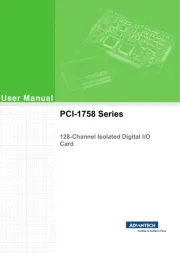
30 Juli 2025
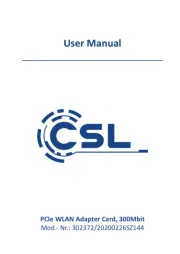
30 Juli 2025
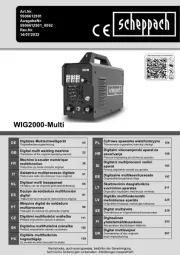
30 Juli 2025
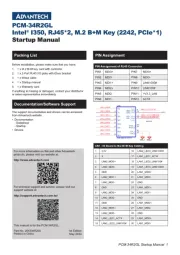
30 Juli 2025
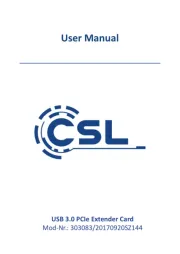
30 Juli 2025
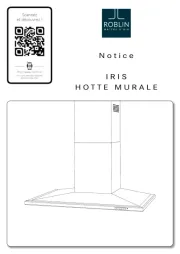
30 Juli 2025
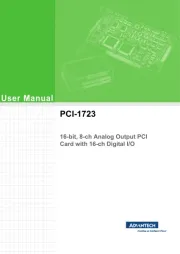
30 Juli 2025
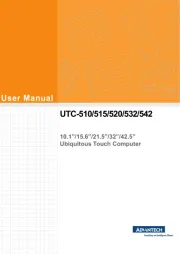
30 Juli 2025
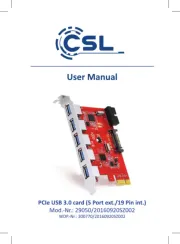
30 Juli 2025

30 Juli 2025